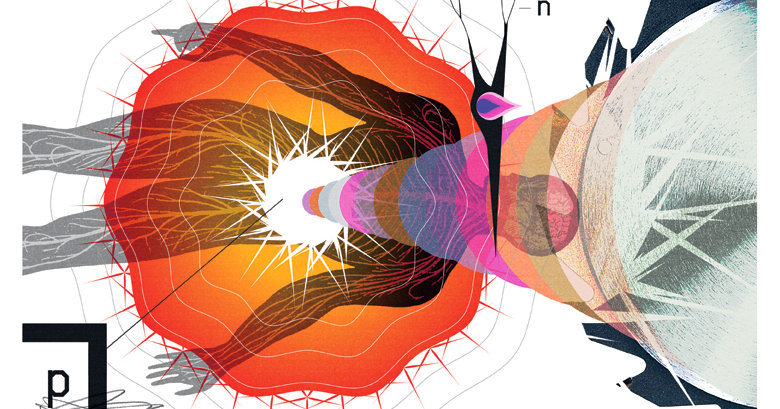
My patient, a yoga instructor, had already received a week of chemotherapy, so he couldn’t be called a complete newcomer to the side effects of his treatment. But he was still bracing himself for what was yet to come.
He was in his 70s and had a rare variety of a rare cancer: acute lymphocytic leukemia, which affects fewer than 3,000 adults yearly in the United States, along with the more common acute myeloid leukemia. Usually, leukemia chooses to corrupt only one tribe of our white blood cells: myeloid or lymphoid, the soldiers of the immune system; his had chosen both.
In response, we decided on therapy that would try to clobber both leukemias at the same time.
The drugs had hit the mark, as the leukemia had disappeared entirely from his blood stream. But they had also missed, taking a whack at his liver and disrupting how his body processed the bile the liver usually makes to help digest food. This misfire had transformed his skin and the whites of his eyes to a painful-to-view fluorescent yellow.
The drugs had also inflamed and eroded the tissue lining the inside of his mouth and esophagus. The pain that resulted made it nearly impossible for him to consume even the thinnest of liquids. One patient told me that with this condition, called mucositis, drinking water was like trying to swallow glass.
On morning rounds, I asked the nurse practitioner caring for him what medicines he was taking to relieve his distress.
She grimaced. “Not much. He can’t take pills anymore,” she said. “We gave him a mouthwash to help with the pain.”
“What about a P.C.A. pump?” I asked. Patient-controlled analgesia pumps allow a background rate of narcotics, often morphine or fentanyl; the patient can then administer extra doses, or boluses, as needed by pushing a button on the IV pump. It was our usual treatment for the unrelenting agony of mucositis, which wouldn’t get better until his immune system recovered from the chemotherapy, weeks from then.
“He’s refused it,” she said, simply. “He doesn’t want to get addicted to the drugs.”
When we entered his room, my patient gave us a brave smile behind his bedside table. It held cups of water, ice, liquid medicines to numb his anguish, and sponge applicators he could use to gently apply the medicine to the fire that raged in his mouth. His lips were red and swollen, the inflammation made even more stark in contrast to the iridescence of his yellow skin. I sat at the edge of his bed.
“That looks like it really, really hurts,” I said softly.
His eyes met mine briefly, then looked away. “It’s not fun,” he answered, his voice barely above a whisper.
“Will you let us help with the pain? The only way people get through this is with narcotics we can give you through your IV. The P.C.A. pump.”
He shook his head. “I’m managing O.K.” He held up one of the green sponges he used for his mouth to show me how he was managing, wearily. It was an effort for him to say even those few words. I wondered if he dipped into some reserves of meditation he had learned through yoga to be so calm in the face of such misery.
“Are you worried you’ll get hooked on the pain medications?” I asked. He glanced down at the sponge, his only temporary salvation from the mucositis, and nodded a bit.
I felt so bad for him. It wasn’t the first time I had heard this from one of my patients. The scourge of the opiate crisis is appalling in the scope of human life it has affected and in the nefarious actions of some doctors and pharmaceutical manufacturers and distributors who have helped fuel it. It is rightly labeled an epidemic.
But there are people with diagnoses like cancer who wouldn’t be able to withstand their conditions — or the aggressive therapies we administer to try to rid them of these diagnoses — without supportive medications like opiates. What has gotten lost in a lot of reporting about the crisis, and the regulatory guardrails that have been put in place to limit opioid prescribing, are the patients who genuinely need the drugs to make their excruciating existence at least somewhat tolerable.
I told my patient that, when used appropriately for limited periods of time and with a proper tapering schedule, it was unlikely he would get hooked on painkillers. One study even showed that death from opioids was 10 times less likely to occur in cancer patients versus the general population.
“You know, we don’t award a crown of thorns at the end of this for suffering,” I gently teased him.
He gave me a half smile, as if more than that would bring on another wave of suffering, and nodded.
“O.K. I’ll try it.” He closed his eyes and let his head drop back in his pillow, as if even the thought of a drug that would finally ameliorate his pain gave him relief.
We started the P.C.A. within the hour, and that night he slept soundly, his pain eased, for the first time in days.
Dr. Mikkael Sekeres (@MikkaelSekeres) is director of the leukemia program at the Cleveland Clinic.

